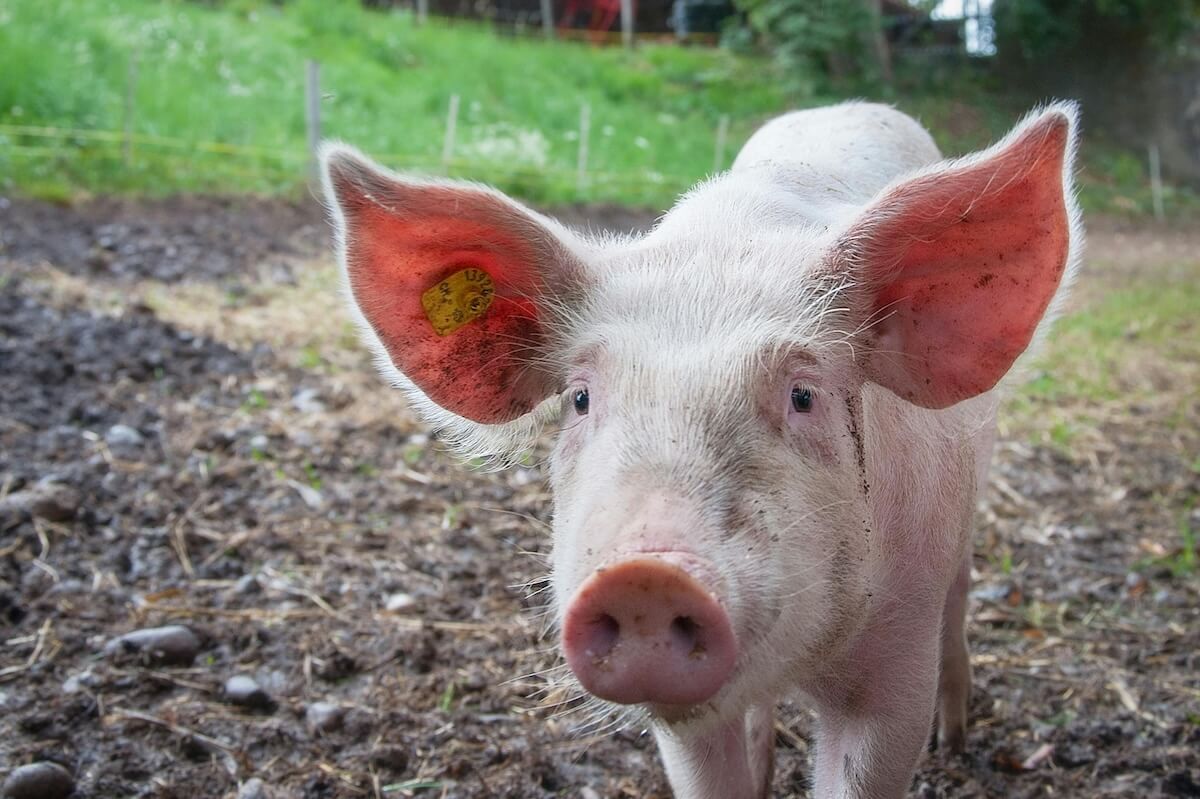Babe is an all-time children’s classic that will charm you to bits (just not the bacon kind).
Based on a 1983 novel, it’s a talking animal movie that tells the story of a young pig who, adopted by a dog, herds sheep with kind words over barks and nibbles.
And it was a success by all accounts. It grossed $254 million at the box office against a $30 million budget. It was nominated for seven Academy Awards (winning for best visual effects).
Conditions were ripe for the producers to cash in with a sequel. Recycle the feel-good themes, play that catchy song again, and watch the profits roll in.
But this producer was legendary filmmaker George Miller. Mad Max or Happy Feet, he doesn’t do safe.
The budget was tripled; the pastoral setting was scrapped.
And Miller went all in this time, co-writing and stepping into the director’s chair for Babe: Pig in the City (though that may be down to friction between him and the original’s director, Chris Noonan).
But while I saw Babe as a child and loved it, I was a young man with my attention elsewhere by the time Pig in the City came out.
Audiences didn’t bite either. Against its $90 million budget, the film brought in just $69 million, with parents complaining it was too dark for children.
But critics like Gene Siskel and Roger Ebert called it a better movie than the original.
So is Babe: Pig in the City a good movie? Let’s find out.
The Plot of Babe: Pig in the City
Picking up just after the last film, pig Babe (E. G. Daily) returns from the sheepherding contest in a happy parade. All looks well at Hoggett Farm.
But when farmer Arthur Hoggett (James Cromwell) tries to fix the water pump, Babe sets off a chain of events that injure the boss.
With Hoggett out of commission, it’s up to his wife, Esme Cordelia Hoggett (Magda Szubanski), to tend the farm.
Things get worse. Men from the bank warn the Hoggetts that they’re behind on their mortgage and threaten them with eviction.
To save the farm, Esme sets off with Babe for a sheepherding competition and a generous appearance fee.
But when an airport drug-sniffing dog incorrectly identifies Esme’s bags, the ensuing interrogation causes them to miss their flight.
With their flight home a few days away, Esme and Babe find shelter at a hotel run by Miss Floom (Mary Stein). Floom secretly shelters many animals, including cats, dogs, chimpanzees, and an orangutan.
When a series of events sees Babe separated from Esme, he’s left on his own amongst the animals of the hotel.
Can Babe survive in the cruel landscape of the city? And will Esme be able to locate him?
The Rest of the Main Cast Includes:
- Julie Godfrey as Hortense
- Mickey Rooney as Fugly Floom
- Janet Foye and Pamela Hawkins as Esme’s friends
- Paul Livingston as a chef
- Kim Story as a judge
- Danny Mann as Ferdinand and Tug
- John Upton as a boy at Metropolis’ local hospital
- Steven Wright as Bob
- Glenne Headly as Zootie
- James Cosmo as Thelonius
- Nathan Kress and Myles Jeffrey as Easy (Kress also portrays a stray puppy)
- Stanley Ralph Ross as a Bull Terrier and Doberman Pinscher
- Russi Taylor as a stray poodle and choir cat
- Adam Goldberg as Flealick
- Eddie Barth as Nigel and Alan
- Miriam Margolyes as Fly
- Bill Capizzi as Snoop
- Hugo Weaving as Rex
- Jim Cummings as a pelican
- Katie Leigh as a kitten
- Evelyn Krape as one of the farm’s sheep and alley cats
- Michael Edward-Stevens as the Hoggetts’ horse
- Charles Bartlett as the Hoggetts’ cow
- Al Mancini and Larry Moss as Thelonius’ goldfish
- Roscoe Lee Browne as the narrator
Additional character voices: Lisa Bailey, Balyne Barbosa, Victor Brandt, Jeannie Elias, Pippa Grandison, J. D. Hall, Mark Hammond, Barbara Harris, Wendy Kamenoff, Scott Leavenworthy, Julie Oppenheimer, Deborah Packer, Roger Rose, Carly Schroeder, Joseph Sicari, Aaron Spann, Drew Lexi Thomas and Naomi Watts.
The Good Things:
Now that’s Camerawork, +3 Points
George Miller and this crew could make a compelling documentary about standing in line.
Even minor events in this film feel impressively cinematic, and when it wants your attention, it delivers something special.
There’s the performance of clown Fugly Floom (and, yes, that’s his name) and his animal performers gone wrong. It ends with Fugly watching his stage burn.
His act in ruins, all Fugly can do is stare. He’s comforted with a hand on his shoulder by the Orangutan Thelonius. Babe also pauses to note the carnage as sad opera rolls.
It’s an arresting scene – a long, odd, deadpan moment of comedy and tragedy.
And there’s the understated sweetness when Thelonius the Orangutan helps Esme hang up her laundry.
Drawing our attention to the contrast in their shapes, we get just the orangutan and human shadows as they work. Mice swoon Elvis’s Are You Lonesome Tonight? in the foreground on a cart of fresh-picked tomatoes.
It’s a subtle but jaw-dropping scene, the orangutan and human a delightfully odd pairing.
Grown-up Themes, +2 Points
Pig In the City teaches the tender-hearted Babe harsh lessons on life outside the farm’s safety net, adding realism to the fantasy world.
The animals in the city take advantage of his naïveté. They steal his suitcase or trick him into a conflict with guard dogs, leaving him baffled at their selfishness or running for his life.
And while Miss Floom gives sanctuary to animals, her neighbor, Hortense, is happy to call animal control to come and round them all up.
Babe’s alone and hungry for most of the movie, trying not to give up.
Not to worry. Babe’s kindness will – spoiler alert – win the day by the film’s end, but he loses the innocent veil of farm life.
Babe’s difficult journey gave me more appreciation for the neighborly safe haven Hogget Farm stands for, making it a stronger movie.
A Tale of Just One City (and a Farm), +2 Points
The two main settings, Hoggett Farm and the City, complement the storytelling. They are artfully exaggerated to match the tone of their scenes.
Hoggett Farm is a cartoonish pastoral world fit for tall hobbits.
We watch Esme call out for Babe in a bright red dress. She’s standing outside a storybook, crooked farmhouse, chickens strewn about.
The sequence of events that injures Farmer Hoggett reminds me of a 1940s Disney Goofy cartoon. With its “if only” narration, it’s tragic but more comic relief than grotesque. Even bad events at the farm lack real teeth.
But the story leaves this agrarian setting behind for the grind of the city. And the mini-metropolis is a stand-in for all the world’s cities, both thematically and physically.
When Babe gazes through the porthole window of his upstairs apartment, we see monuments like the “Hollywood” sign, Eiffel Tower, and Golden Gate Bridge. And the city has little bridges over water as if we’re in Venice, characters written on a billboard you might find somewhere in Asia.
This is for Kids? +2 Points
Audiences complained Pig In the City is too dark for a children’s movie, and it has a few unsettling moments.
In a scene as grim and powerful as it reads, Babe loses hope after being chased by a guard dog. Slow motion kicks in, the editing and narration turning almost horrific as he processes the unfortunate and cruel events that led to the moment.
Then he stops running, turns to the dog, and asks, simply, “Why?” before he’s struck.
It punches you straight in the emotions, but it gets worse.
Once Babe is safe, the dog falls in, his face stuck in the water while he struggles, unable to free himself. And it goes on long enough to get uncomfortable.
The other animals are content to let him drown, excusing their inaction.
As much as that scene is possibly the cinematic apex of the film and the lowest point of Babe’s journey, it is rawer than we expect in children’s fare.
But one of the original Babe’s strengths is balancing a feel-good movie with realism. It has some all-too-honest, savage moments.
In Babe’s first scenes, he says goodbye to his biological pig mom as she’s taken off to slaughter. Later in the movie, his good friend Maa is killed in a vicious dog attack.
So while Pig In the City hits a little harder, it leaves out some of the original’s levity, tipping the scales a little darker. Because when the pig is down this time, nobody’s dancing jigs and singing to cheer him up.
But it still has a happy ending and no actual violence.
So is it for kids? Maybe not the littlest of ones, no.
The Not-As-Good Things:
The Jokes Don’t Land, -2 Point
I enjoyed Ferdinand, Babe’s anxious duck sidekick. And a few porcine-faced strangers lend a helping hand in some crucial moments.
But the rest of the humor?
Well, gags in the movie include dumping huge buckets of glue on Esme, a court reporter scrambling to keep up with Esme’s rambling plea to a judge, and Esme donning inflatable clown pants.
Yeah, it’s not the stuff of classics.
And while comedian Steven Wright voices Bob, the Chimpanzee, it comes to nothing.
You can see why Wright was cast: Bob’s a muttering curmudgeon with plenty of crank factor. But Bob lacks the sharp observational humor or one-liners that made Wright famous, and how this movie could use one or two.
Head Scratching Climax, -2 Points
**Spoiler Alerts Here**
The movie ends with a bunch of clowning around, literally.
The animals find themselves in a large ballroom at a high-class charity dinner.
Ms. Floom and Esme, who is wearing Uncle Fugly’s inflatable clown pants, battle the restaurant staff for the animals.
Some say it’s a bizarro homage to Thunder Dome (Mad Max: Beyond Thunderdome).
Esme grabs banners from the ceiling and swings around, trying to free Babe from the clutches of a restaurant chef…oddly motivated to fight her for him?
It’s bizarre and just not that amusing.
And it’s a lost opportunity, as the heroes square off with villains they have no prior connection to.
Since the animal control agents took a little too much joy rounding up Babe and his friends, how about some retaliation, say, Home Alone style?
Should I Watch Babe: Pig in the City?
Total Arbitrary Points Score: 5 Points
After all these years, I’m glad I watched Babe: Pig in the City.
It dares to push how dark you can go in a children’s movie. And may its gorgeous visuals add themselves to the film library that haunts my brain.
But no matter how masterfully told, it doesn’t make me laugh. And its lackluster climax sees it go out with a whimper.
If you’re a George Miller fan or appreciate a movie that defies expectations, I recommend you give this movie a second chance.
But if you’re in the market for a happy little kids’ movie…yeah, go with the original.
Enjoyed this Post?
Thank you so much. If you’d like to get a ping when I have a new article, you can join my newsletter below.
Disclaimer:
This review’s factual information was gathered through online sources, like Wikipedia, IMDB, or interviews. Misrepresentations and errors are possible but unintentional.
Making art is hard. This is a fan’s blog. Any criticisms are meant to be constructive.




